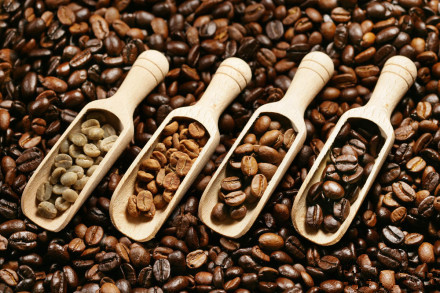Ecuadorian coffee comes from the seductive beans of the equator

Most countries in the world are rich in only one kind of coffee beans, while Ecuador is one of the few countries in the world that can produce both Arabica coffee beans and Robusta coffee beans. The Ecuadorian Coffee tasting, sponsored by the Consulate of Ecuador in Guangzhou, was recently held at the Art Cafe in the Guangdong Provincial Museum.
Organic beans, flowers and fruits, caramel smell to the nostrils
According to Ms. Malena, Consul General of the Consulate General of Ecuador in Guangzhou, Ecuador is located in South America, and the equatorial line runs through the country, so it is also known as the "equatorial country". Its superior geographical location, fertile soil and special climatic conditions create a superior natural environment for coffee bean cultivation.
The coffee beans produced in Ecuador's Galapagos Islands are organic coffee beans, thanks to the unique ecological environment such as volcanic soil and microclimate, coupled with the fact that they do not use any chemical fertilizers or pesticides, they are recognized as natural green boutique coffee. this naturally grown coffee has a mild taste with a hint of flowers and fruit and caramel. It is understood that the Galapagos Islands are about 1000 kilometers away from the mainland of Ecuador and are located at the confluence of the eastern Pacific Ocean and the three major ocean currents. In 1978, the Galapagos Islands was declared a "World Natural Heritage site" by UNESCO. The archipelago is known as the "living Museum of Biological Evolution" and "the melting pot of marine life", and Darwin's theory of evolution was inspired by the Galapagos Islands.
The addition of Gaoshandou to the rose is so amazing.
Mr. Veniso, champion of the 2014 Ecuadorian Coffee Competition, told reporters that some of the Ecuadorian coffee is espresso made from Ecuadorian alpine coffee beans. This coffee comes from a mountain area about 1000 to 2000 meters above sea level and has a mellow taste with aromas and sweetness of fruit, grass and chocolate. Some add mint grass from the Amazon to this espresso. Some add Ecuadorian rose petals called "Rolls-Royce in roses" to espresso for amazing taste.
Ms. Malena, Consulate General of Ecuador in Guangzhou, said that coffee buyers from Guangdong have gone to Ecuador to buy coffee beans, and coffee lovers in Guangzhou will soon be able to taste the fragrant Ecuadorian coffee in the cafes on the streets.
Important Notice :
前街咖啡 FrontStreet Coffee has moved to new addredd:
FrontStreet Coffee Address: 315,Donghua East Road,GuangZhou
Tel:020 38364473
- Prev

Coffee brewing tips Popular questions about brewing a cup of coffee
In the dead of night, when I was working overtime for the movie DotA, I had a cup of instant coffee that tasted very good. It seemed that my hand speed had also increased a lot. However, playing the game also required a ladder level, so drinking coffee naturally had a higher pursuit. Coffee, as one of the most popular beverages in human society, is known for its bitter and exciting effects caused by caffeine. Before leaving Africa
- Next

Do you know why Koreans are so successful in opening cafes?
What are the most popular cafes in China's first-and second-tier cities in the past two years? The answer is not Starbucks or COSTA, but all kinds of cafes with Feel: coffee with you, coffee from the zoo, coffee from Hollis, coffee from the road, and so on. These cafes have one thing in common: they are all founded by Koreans! Coffee? Come on, it's just a little prop!
Related
- Beginners will see the "Coffee pull flower" guide!
- What is the difference between ice blog purified milk and ordinary milk coffee?
- Why is the Philippines the largest producer of crops in Liberia?
- For coffee extraction, should the fine powder be retained?
- How does extracted espresso fill pressed powder? How much strength does it take to press the powder?
- How to make jasmine cold extract coffee? Is the jasmine + latte good?
- Will this little toy really make the coffee taste better? How does Lily Drip affect coffee extraction?
- Will the action of slapping the filter cup also affect coffee extraction?
- What's the difference between powder-to-water ratio and powder-to-liquid ratio?
- What is the Ethiopian local species? What does it have to do with Heirloom native species?

